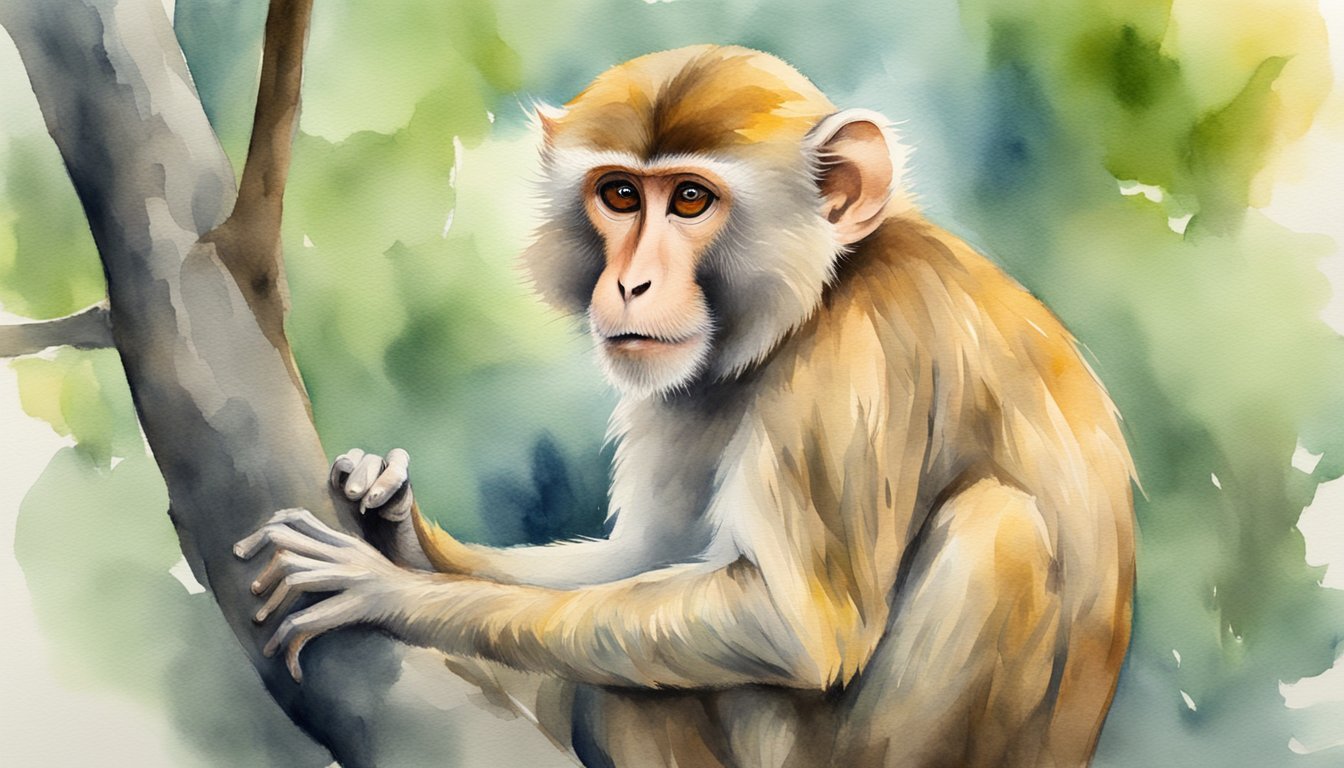Rhesus Macaque Overview

The rhesus macaque, a well-known Old World monkey species, plays a significant role both in scientific research and the ecosystem of their native habitats in Asia.
Scientific Classification and Distribution
Rhesus macaque (Macaca mulatta), belonging to the Cercopithecidae family, is a primate species indigenous to Asia. These macaques are found in various regions such as India, China, Pakistan, Nepal, Bangladesh, Vietnam, Thailand, and Afghanistan. Introduced populations exist in areas like Florida, indicating the species’ adaptability.
Physical Characteristics
The rhesus macaque exhibits a brown or grey coat with a pink face devoid of fur. Adults can vary significantly in size, with males usually larger than females. These primates have a distinctive short tail that differentiates them from other species.
Behavior and Social Structure
Rhesus macaques are known for their complex social behavior and active, diurnal lifestyle. They live in groups called troops, governed by intricate hierarchies. Their communication involves a variety of gestures and facial expressions, with grooming playing a key role in their social interactions.
Habitat and Conservation Status
These adaptable primates can thrive in diverse habitats including forests, grasslands near water sources, and even alongside human populations in temples and cities. The rhesus macaque is classified as “Least Concern” on the conservation status scale, yet some populations are at risk due to habitat destruction and hunting.
Interaction with Humans
The relationship between rhesus macaques and humans is multifaceted. These animals are crucial in psychological research, medicine, and have even contributed to space exploration. Their similarity to humans makes them valuable in studies relating to psychology, vaccines, and several biological fields.
Feeding Habits
Rhesus macaques have an omnivorous diet, feeding on a variety of foods such as fruit, insects, seeds, and crops. They are known for their cheek pouches which allow them to store food and eat it later. Species commonly consumed include termites, grasshoppers, ants, and beetles, demonstrating their adaptive feeding strategies.
For deeper insights into their regions and habits, read about them on Wikipedia, Britannica, and National Geographic.
Rhesus Macaque in Research and Culture
The rhesus macaque has a significant presence both in the scientific community for its contributions to research and in the cultural fabric of the societies where it is native. These primates are at the center of important discoveries in medicine and psychology and have a unique role in the ecosystem and human culture.
Contribution to Science
Researchers recognize the rhesus macaque as a critical model organism in various scientific fields due to its close genetic and physiological similarities to humans. Studies of these non-human primates have propelled crucial advancements in biomedical research, particularly in understanding human diseases and developing vaccines. Their part in understanding the human mind through psychological research is also noteworthy, aiding in insight into social behavior and cognitive functions.
Cultural Significance
In Asia, especially within India and China, the rhesus macaque holds a prominent place in various cultures. Often seen in and around temples, they are sometimes revered and can be found in many artworks and stories, reflecting the interwoven nature of humans and these primates in certain cultural histories.
Rhesus Macaque as an Invasive Species
In regions such as Florida, rhesus macaques have been introduced and are considered an invasive species, competing with native wildlife for resources and potentially impacting local ecosystems. Their adaptability has allowed them to thrive in various habitats outside of their native range, raising concerns about environmental balance and the need for management.
Reproduction and Lifespan
Rhesus macaques have a complex mating system and are known to form intricate social structures for raising their young. Their reproduction contributes to their success as a species, with a lifespan that can extend to approximately 25 years in the wild.
Adaptations and Skills
These primates exhibit remarkable adaptations, with the ability to live in both arboreal and terrestrial environments. They are excellent swimmers, beneficial for their survival in diverse ecosystems. Their highly social nature and learning abilities are key to their complex group dynamics.
Diet and Foraging Behavior
Rhesus macaques have an omnivorous diet, feeding on fruit, seeds, roots, and insects. Their foraging behavior is highly adaptable, allowing them to exploit a wide variety of food sources, including crops and bark, which can put them at odds with humans in agricultural regions.

